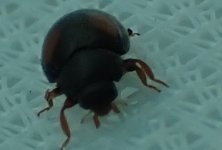pdwinter
Paul Winter
I find that with Dragonflies -- particularly damselflies in grassland on a windy dayUnlike with birds, dragonflies, or butterflies where you might just pick one up by sight when flying around a roughly described location, it's possible to lose a ladybird completely before you've had an identifiable view, even when you know where you've dropped it! 😂





















